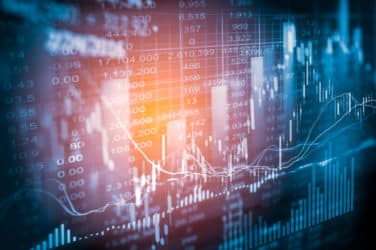
A century ago, traders looking for stock market data scrolled through electronic feeds.
Today, traders looking for stock market data scroll through electronic feeds.

A century ago
The similarities between how market participants sourced data in the days of yore and how they do so in 2017 end there. But today’s digital feeds of Twitter and other social media can be seen as direct descendants of the electronically generated paper strip that was studied by fedora-clad men in old black-and-white photos.
“In many ways, social media has replaced the ticker tape machine that used to be pervasive in trading outlets as the immediate source of information,” said Chris Roush, professor at the University of North Carolina’s School of Media and Journalism.
Once a curiosity widely perceived as a platform for personal anecdotes, opinions, and wisecracks, social media has evolved to be an accepted, even necessary, means for financial traders to stay on top of breaking news. It’s closer to real-time than traditional media outlets, and with Twitter in particular, the breadth and diversity of content creators — not only news organizations themselves, but individual reporters, government leaders, company executives, and citizen journalists — represent unique value for investors.
Twitter has recently come on to emphasize, and amplify, its core strength. “Twitter is the best at showing what’s happening in the world and what’s being talked about,” Anthony Noto, chief operating officer of the social-media platform, said on an earnings conference call earlier this year. “Having the political leaders of the world as well as news agencies participating in driving that is an important element to reinforcing what we’re the best at.”

Ed Oliver, Dataminr
“There is still some skepticism about what Twitter is, but that is much less prevalent,” said Ed Oliver, director, finance sales at Dataminr. “Now that more people understand it and see the value, the question now becomes, how do I get to the valuable content, to the information that matters? That’s what investors are moving towards.”
A January 2017 question on knowledge-sharing site Quora read: “Why is Twitter the best place to be connected with what’s happening right now?” The featured answer noted there is a critical mass of active users, which means first-hand sources can break news, and they can do so with low friction, using a photo and/or a short text blast.
The critical mass represents eyes and ears everywhere there are people with smartphones. Low friction means mere seconds between something happening, and that information appearing on social media.
The workflow between a journalist — just one type of content producer on Twitter, but an important one — and his or her news organization illustrates how Twitter wins on speed. “The reporter is the one standing there, seeing it and hearing news as it happens,” Oliver said. “In many cases, they aren’t writing the story, and then sending it to their editors to put on their website. Instead, they’re tweeting about it and then following up with a more detailed story.”

Chris Roush, UNC
Roush noted that traders need to gauge credibility when culling user-created content for actionable data, but the future of the methodology is expansive. “Social media will become even more important as a source,” he said. “More business news organizations are looking to tap into its potential because it provides an immediate connection with readers and viewers.”






